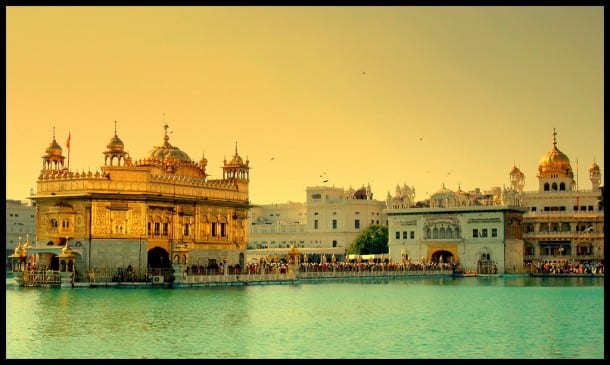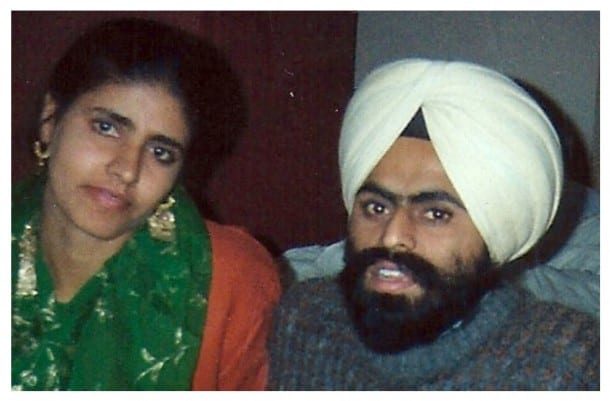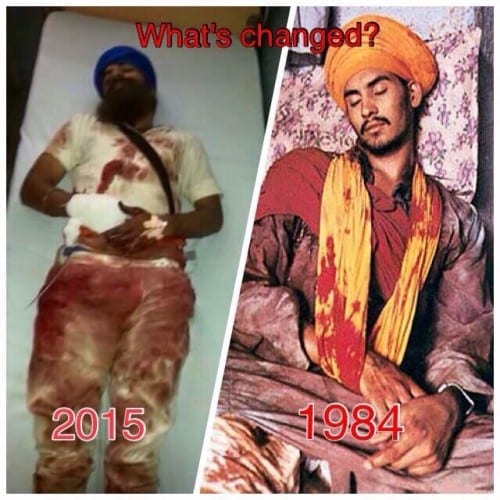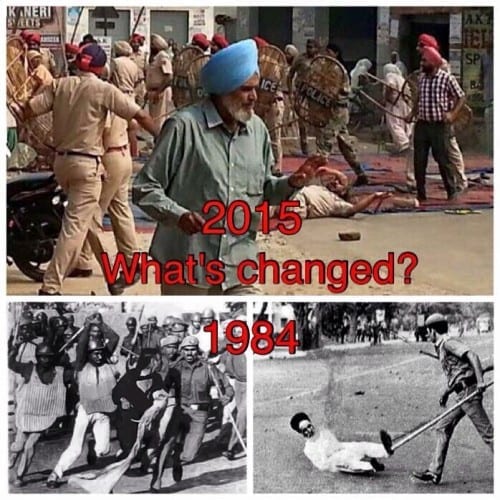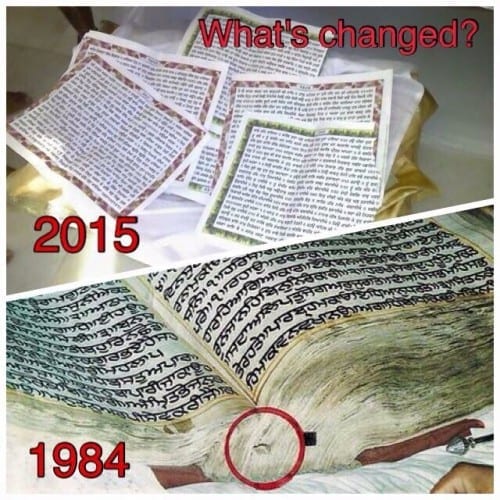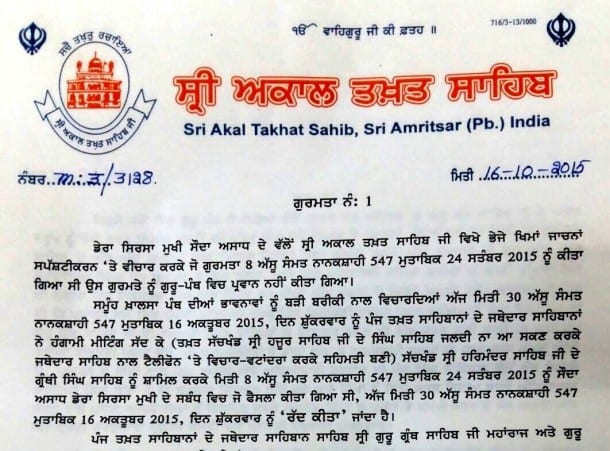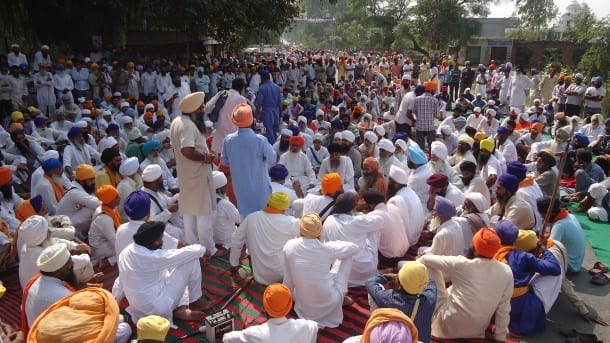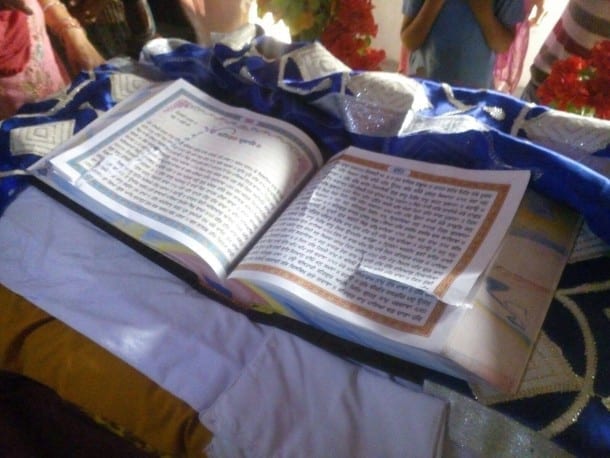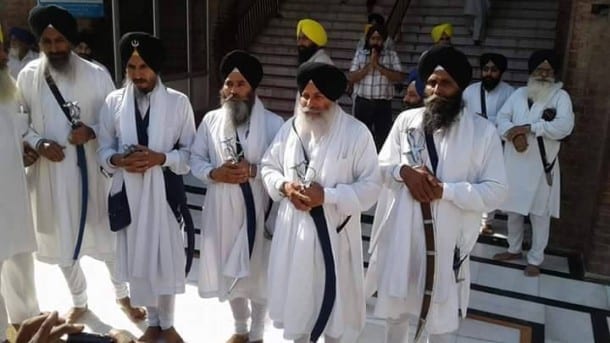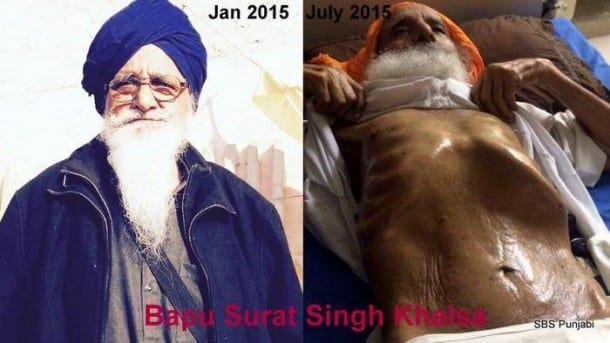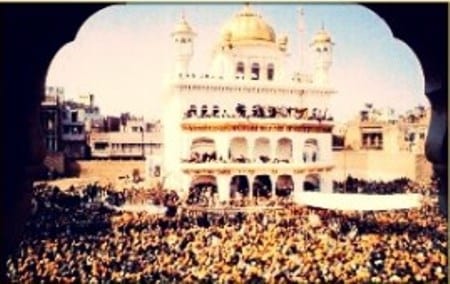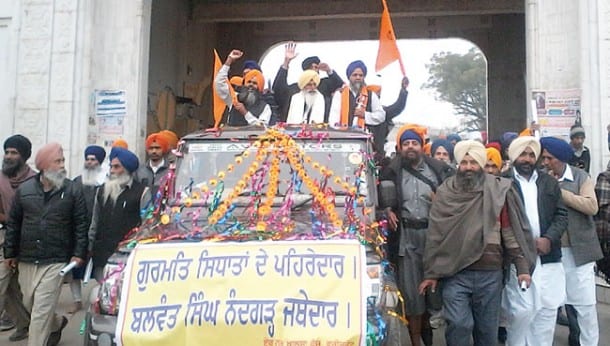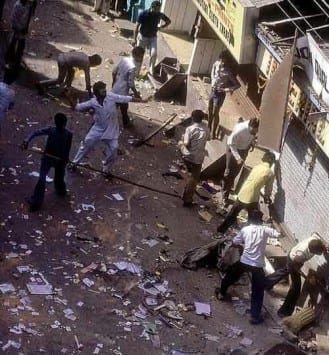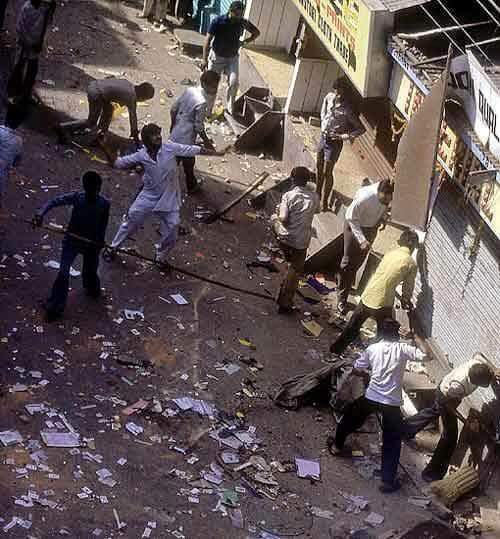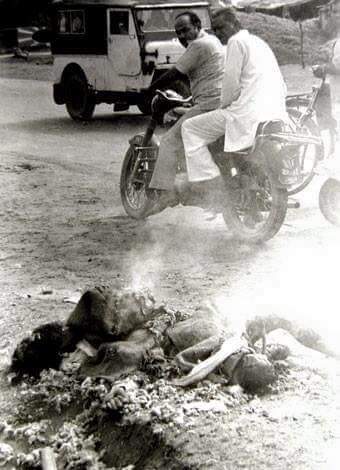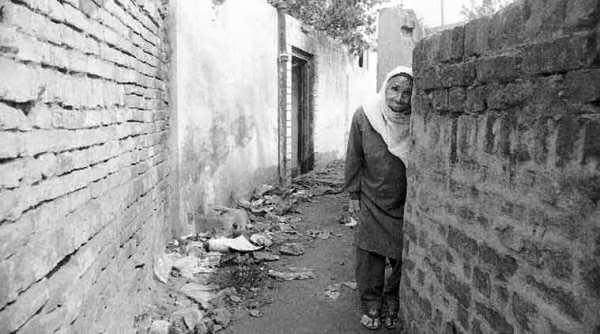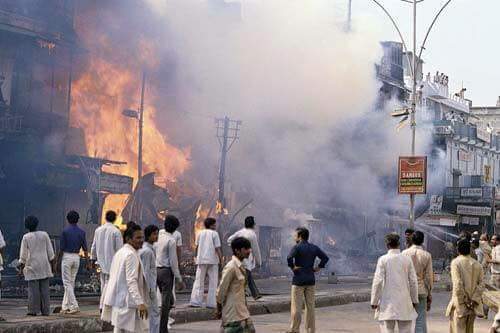SikhFeed: How to Make the Most of Black Friday
SikhFeed: Five Facts About Guru Tegh Bahadur Sahib Ji
Top 10 Architects of 1984 Sikh Genocide
The Indian Government finally declared the events of November 1984 a genocide. During the first week of November 1984, an estimated 3,000 Sikhs were massacred in India’s capital. According to eyewitnesses and Indian human rights activists, the killings were organized by government officials and facilitated by police officials.
Here is a list of Top 10 Architects, who were involved with the massacre of thousands of Sikhs during November 1984, also remembered as Sikh Genocide.
![2014-10-25-rajiv]() 1. Rajiv Gandhi
1. Rajiv Gandhi
Rajiv Gandhi was the real mastermind of the Sikh genocide. Shortly after Rajiv Gandhi was sworn in, senior advocate and opposition leader, Ram Jethmalani, met Home Minister, P.V. Narasimha Rao and urged him to take immediate steps to save Sikhs from further attacks. Rajiv Gandhi did not even take calls from the President when he tried to get in touch with him to discuss the situation. However It was alleged that Rajiv Gandhi deliberately delayed in calling in the Army, a move which many believe could have saved the lives of many.
![2014-10-25-nehru]() 2. Arun Nehru
2. Arun Nehru
A close associate of Rajiv Gandhi and former MP Arun Nehru had granted approval for the massacre of Sikhs in Delhi. The whole operation was directed by Arun Nehru who usurped the functions of the home minister and ensured that 6000 Sikh policemen were disarmed and sent home from active duty in the afternoon of October 31 1984.
He was later rewarded as Minister Of Internal security and was largely responsible for draconian laws and genocidal policies which were implemented in Punjab against Sikh freedom fighters.
![2014-10-25-bachan]() 3. Amitabh Bachan
3. Amitabh Bachan
Credit of massacre of Sikhs in their genocide goes to Amitabh Bachan who provoked first of all on national TV DoorDarshan and spread violence all over India in 1984. He was the first to give such call before all other perpetrators of pogrom of 1984.
He said, “Sikhs had not only assassinated Indira Gandhi, they had killed the mother of the nation.”
He raised the slogan ‘Khoon ke chheente Indira ko marne walon ke gharon tak pahunchne chahiye (The bloodstains must reach the houses of those who killed Indira)’
![2014-10-25-kumar]() 4. Sajjan Kumar
4. Sajjan Kumar
Fall of 1984 – Known as the “Butcher of Punjab” Sajjan Kumar allegedly incited Delhi anti-Sikh Pogroms, instigated mob mayhem, and encouraged acts of Sikh genocide resulting in over 3,000 deaths. He led murderous mob killing and looting Sikhs in Delhi. He paid Rs. 100 and a bottle of liquor to each person involved in the killing.
5. Jagdish Kapoor Tytler
October 31, 1984 – Accused as being a leader of the Delhi anti-Sikh Pogroms, Jagdish Kapoor Tytler, allegedly involved in a criminal conspiracy to incite genocide. The 2000 investigation by the Nanavati Commission officially reported the finding of credible evidence, unsupported by concrete evidence, which resulted in failure to prosecute.
Surinder Singh, the head granthi of Gurdwara Pulbangash, said in a sworn affidavit in January 2002 that Congress leader Jagdish Tytler, then the local MP, led the mob that had attacked his gurdwara.
![2014-10-25-maken]() 6. Lalit Maken
6. Lalit Maken
Lalit Maken, Congress(I) trade union leader and metropolitan councilor. Reportedly paid the mobsters Rs.100 each plus a bottle of liquor.
A white Ambassador car reportedly belonging to him came four times to the GT Road area near Azadpur. Instructions to mobs indulging in arson were given from inside the car.
 7. HKL Bhagat – Former Minister of state (Information and Broadcasting) and senior member of Indian National Congress party.
7. HKL Bhagat – Former Minister of state (Information and Broadcasting) and senior member of Indian National Congress party.
In 1984, HKL Bhagat was Member Parliament (Lok Sabha) Constituency ‘East Delhi’, Delhi. During the “84′ Sikh Genocide”, HKL Bhagat led murderous mob killing and looting Sikhs in Delhi.
He personally went to Shahdara Thana, Gandhi Nagar Police station to get miscreants of “84′ Sikh Genocide” released. Bhagat had led a group of 15 people and told crowds of his supporters to kill Sikhs. One witness Balbir Kaur saw Bhagat inciting a crowd of 5,000 people.
Other witnesses have recorded how Bhagat sought to force witnesses not to name him in the days following the massacre. He died in October 2005.
![2014-10-25-nath]() 8. Kamal Nath – Senior member of Indian National Congress party.
8. Kamal Nath – Senior member of Indian National Congress party.
In 1984, Kamal Nath was Member Parliament (Lok Sabha) Constitutency ‘Chhindwara’, Madhya Pradesh. During the “November 1984 Sikh Genocide”, Kamal Nath led mob that came to the Gurdwara Rakabganj, Delhi on November 1, 1984 and instructed the police to open fire on the Gurdwara Sahib, where a large number of Sikhs were killed.
Under instructions of Kamal Nath, Police men present at the scene instead of preventing the attack, joined the attackers and fired several rounds at the Gurdwara Sahib
Sikhs burnt alive laid in critical condition in Kamal Nath’s presence and died due to lack of Medical Assistance
Police Commissioner Gautam Kaul verified Kamal Nath’s presence while the Gurdwara was attacked and Sikhs were burnt alive
“I had noticed that Mr.Kamal Nath was controlling the crowd and the crowd was looking to him for directions”, Senior Journalist Sanjay Suri in his statement before Nanavati Commission
![2014-10-25-shastri]() 9. Dharam Dass Shastri
9. Dharam Dass Shastri
In 1984, Dharam Das Shastri was Member Parliament (Lok Sabha) Constitutency, Karol Bagh, Delhi. During the “84′ Sikh Genocide”, he carried voters list with him at Prakash Nagar for identification of Sikhs.
He along with other Congress leaders tried to pressurize the SHO of Karol Bagh Police Station to release the persons who arrested during the police raids to recover looted property.
![2014-10-25-bhajan lal]() 10. Bhajan Lal
10. Bhajan Lal
Haryana Chief Minister and Congress leader Bhajan Lal Incited Killing of Sikhs in 1984 and organized the attacks on Sikhs in Haryana during November 1984.
Police commondos from Police headquarters Madhuban, Haryana on the orders of Bhajan Lal, the then Chief Minister of Haryana send to commit the massacre of Sikhs.
Pictorial: 13 Pictures of Sikh Statues Around the World
9 Beautiful Paintings of Harmandir Sahib (Pictorial)
SikhFeed: 5 Reasons the Censor Board Wanted ‘Messenger of God’ Banned

Click here to view the embedded video.
Please click here if you are unable to load the video.
9 Numbers That Explain How Americans View Sikhs
With more than 150 years of history in the United States, Sikh Americans are still highly misunderstood.
Regularly subjected to discrimination and occasionally even the targets of hate crimes, Sikhs number between 200,000 and 500,000 in the U.S., according to AP. There are an estimated 25 million Sikhs worldwide, making their tradition one of the largest organized religions on the globe.
Sikhism is a monotheistic faith that teaches equality, honesty and the importance of good acts over rituals, among many other beliefs. However, Sikh Americans have become the targets of hate and violence, especially in the years following the Sept. 11.
A 2014 study commissioned by the National Sikh Campaign (NSC) and conducted by Hart Research Associates aimed to show how Americans view Sikhs today, analyzing date from three focus groups consisting of white Americans with mixed levels of education and a nationwide survey of 1,144 non-Asian Americans. The results are discouraging but demonstrate the effect even a small amount of education can have in raising tolerance.
The numbers below all derive from the study, “Sikhism in the U.S.: What Americans know and need to know.”
60
The percentage of Americans who admit to knowing nothing at all about Sikh Americans, compared to 76 percent who say they know at least something about Muslim Americans and 86 percent who know something about Jewish Americans.
11
The percentage of Americans who have a close friend or acquaintance who is Sikh, while just 31 percent have seen or interacted with a Sikh person at all.
16-34
The age range of Americans who are most likely to know Sikh Americans personally or have at least some knowledge of the faith.
11
The percentage of Americans who associate the image of a turbaned man with Sikhism, compared to 20 percent who assume he is Muslim.
17
The percentage of Americans who think they have much in common with a Sikh woman in a turban, compared to 30 percent who feel they have something in common a Sikh woman with long hair and no turban.
1 in 10
The number of Americans who, after viewing images of Sikh Americans, offered the reaction that “they are human beings just like me and they deserve respect.”
2 in 3
The number of Americans who rate their feelings as highly favorable to a description of Sikhism and Sikh history in America.
17.5
The increase in percentage points who report “warm” feeling toward Sikh Americans after taking the survey.
47
The increase in percentage points of women who believe Sikh Americans hold American values after taking the survey. Americans age 65 and older also increased in that category by 45 percentage points.
SikhFeed: Five Inspirational Quotes by Bhagat Puran Singh Ji
- “Dignity in death is a birthright of each living thing.”
- “Stop these mockeries and do not talk, but live. Do not be anxious to save Sikhism. Rest assured that Sikhism can take care of itself. Your only anxiety should be to save yourself.”
- “The thoughts of great men are the common heritage of humanity and let our countrymen receive inspiration and guidance from these thoughts.”
- “Freedom is not an achievement but an opportunity.”
- “Those who die for their country are martyrs and those who live for their country are greater martyrs.”
[Graphic] Japanese Soldiers Used Indian Pows For Target Practice In WWII


Video: Caucasian Student Nick Singh’s Story of Coming into Sikhi

SikhFeed: 12 Toxic Behaviors That Push You Away From Being a Good Sikh
Sikhi is a difficult path, but the ideas and philosophy are simple. One of the main ideas to keep in mind though, is that to be a good Sikh, one must first be a good Human Being. Guru Nanak Dev Jee started the path at that point, teach others to be good to one another. But there are scores of toxic behaviors that push people away from each other and hurt the basic Sikh philosophies of daya (compassion) and santokh (contentment). We’ve all witnessed the devastation these behaviors cause—to relationships, to personal, spiritual, and professional growth, and to the general well-being of both the individual behaving negatively, and to everyone in their life.
Let’s be honest—we’ve all acted in toxic, damaging ways at one time or another. None of us are immune to occasional toxic mood swings, but many people are more evolved, balanced and aware, and such occurrences happen only rarely in their lives. We are not humans having a spiritual experience, we are spiritual beings having a human experience. Expelling toxic behaviors from our daily life, will make us better Human Beings and better Sikhs.
Whether your toxic behavior is a common occurrence, or just a once in a blue moon phenomena, it’s critical for your long-term happiness and success that you are able to recognize when you’re behaving negatively, and consciously shift your mindset when necessary.

Your behavior is a little thing that makes a big difference.
The twelve most common toxic behaviors are:
- Being envious of everyone else. – Don’t let envy (or jealously) get the best of you. Envy, (eerkha) is the art of counting someone else’s blessings instead of your own. There is nothing attractive or admirable about this behavior. So stop comparing your journey with everyone else’s. Your journey is YOUR journey, NOT a competition. You are in competition with one person and one person only – yourself. You are competing to be the best you can be. If you want to measure your progress, compare yourself to who you were yesterday.
- Taking everything too personally. – People are toxic to be around when they believe that everything happening around them is a direct assault on them or is in some way all about them. The truth is that what people say and do to you is much more about them, than you. People’s reactions to you are about their perspectives, wounds and experiences. Whether people think you’re amazing, or believe you’re the worst, again, is more about them. I’m not suggesting we should be narcissists and ignore all feedback. I am saying that so much hurt, disappointment and sadness in our lives comes from our taking things personally. In most cases it’s far more productive and healthy to let go of other people’s good or bad opinion of you, and to operate with your own intuition and wisdom as your guide. Let good and bad happen around you while you rise above it in contentment and Chardi kala.
- Acting like you’re always a victim. – Another toxic behavior is persistent complaining that fuels your sense of victimization. Believing you’re a victim, that you have no power to exert and no power over the direction of your life, is a toxic stance that keeps you stuck. People who have suffered major trauma in their lives but found the courage to turn it all around, as many gursikhs in our history have, we know we all have access to far more power, authority, and influence over our lives than we initially believe, this is all due to Guru Sahib’s blessings. When you stop complaining, and refuse to see yourself as a helpless victim, you’ll find that you are more powerful than you realized, but only if you choose to accept this reality. Guru sahib gives you everything you need and only places burdens on you that he knows you can handle.
- Hoarding pain and loss. – One of the hardest lessons in life is letting go—whether it’s guilt, anger, love or loss. Change is never easy—you fight to hold on and you fight to let go—moh, or attachment, makes it difficult. But often times letting go is the healthiest path forward. It clears out toxic thoughts from the past. You’ve got to emotionally free yourself from the things that once meant a lot to you, so you can move beyond the past and the pain it brings you. Again, it takes hard work to let go and refocus your thoughts, but it’s worth every bit of effort you can muster.
- Obsessive negative thinking. – It’s very hard to be around people who refuse to let go of negativity—when they ruminate and speak incessantly about the terrible things that could happen and have happened, the scorns they’ve suffered, and the unfairness of life. These people stubbornly refuse to see the positive side of life and the positive lessons from what’s happening. Pessimism is one thing, but remaining perpetually locked in a negative mindset is another. Only seeing the negative, and operating from a view that everything is negative and against you, is a twisted way of thinking and living, and you can change that.
- Lack of emotional self-control. – An inability to manage your emotions is toxic to everyone around you. We all know these people—those who explode in anger and tears over the smallest hiccup or problem—this is also a strong part of Punjabi culture. Yelling at the grocery store clerk for the long line, screaming at an employee for a small error she made, or losing it with your daughter for spilling juice on the floor. If you find that you’re overly emotional, losing your cool at every turn, you may need some outside assistance to help you gain control over your emotions and understand what’s at the root of your inner angst. There’s more to it than what appears on the surface. An independent perspective—and a new kind of support—can work wonders. Keeping a strong nitnem, simran, and amritvela routine can help clear and discipline the mind as well.
- Making superficial judgments about others. – Don’t always judge a person by what they show you. Remember, what you’ve seen is oftentimes only what that person has chosen to show you, or what they were driven to show based on their inner stress and pain. Alas, when another person tries to make you suffer in some small way, it is usually because they suffer deep within themselves. Their suffering is simply spilling over. They do not need punishment or ridicule, they need help. If you can’t help them, let them be. Being compassionate and having daya for another person is the first step to being a good Sikh.
- Cruelty (or lacking empathy and compassion). – One of the most toxic behaviors—cruelty—stems from a total lack of daya, empathy, concern or compassion for others. We see it every day online and in the media—people being devastatingly unkind and hurtful to others just because they can. They tear people down online in a cowardly way, using their anonymity as a shield. Cruelty, backstabbing, and hurting others for any reason is toxic, and it hurts you as well. If you find yourself backstabbing and tearing someone else down, stop in your tracks. Dig deep and find compassion in your heart, and realize that we’re all in this together.
- Cheating and cutting moral corners simply because you can. – Cheating is a choice, not a mistake, and not an excuse! Guru Nanak Dev Jee tells us that God is Truth. When we stray from the truth in our daily lives, we stray from God. If you decide to cheat, and you succeed in cheating someone out of something, don’t think that this person is a fool. Realize that this person trusted you much more than you ever deserved. Be bigger than that. Don’t do immoral things simply because you can. Don’t cheat. Be honest with yourself and everyone else. Do the right thing. Integrity is the essence of a gursikh and a part of everything successful.
- Hiding your truth. – People cannot connect with you if you’re constantly trying to hide from yourself. And this becomes a truly toxic situation the minute they become attached to your false persona. So remember, no matter what age, race, or gender you are, underneath all your external decorations you are a pure, eternal, beautiful being—each and every one of us are. We each have light to shine, and missions to accomplish. Celebrate being different, off the beaten path, a little on the weird side, your own special creation. If you find yourself feeling like a fish out of water, by all means find a new river to swim in. But DO NOT change who you are; BE who you are. Don’t deny yourself, improve yourself.
- Needing constant validation. – People who constantly strive for validation by others are exhausting to be around. Those men and women who get caught up in the need to prove their worth over and over and over, and constantly want to win over everyone around them, are unintentionally toxic and draining. Know this. Over-attaching to how things have to look to others can wear you out and bring everyone else around you down. There is a bigger picture to your life, and it’s not about what you achieve in the eyes of the masses. It’s about the journey, the process, the path—what you’re learning, how you’re helping others learn too, and the growing process you allow yourself to participate in. What matters is your own relationship to the Guru and your own relationship to each person around you.
- Being a stubborn perfectionist. – As human beings, we often chase hypothetical, static states of perfection. We do so when we are searching for the perfect house, job, friend or life partner. The problem, of course, is that perfection doesn’t exist in a static state. Because life is a continual journey, constantly evolving and changing. What is here today is not exactly the same tomorrow—that perfect house, job, or friend will eventually fade to a state of imperfection. But with a little patience and an open mind, over time, that imperfect house evolves into a comfortable home. That imperfect job evolves into a rewarding career. That imperfect friend evolves into a steady shoulder to lean on. It’s just a matter of letting perfectionism GO.
THE FLOOR IS YOURS…
If you can relate to any of these toxic behaviors, remember, you are not alone. We all have unhealthy personalities buried deep within us that have the potential to sneak up on us sometimes. As stated above, the key is awareness—recognizing these behaviors and stopping them in their tracks.
So, what toxic behaviors (or mood swings) sometimes sneak up on you? What toxic behaviors push you away from Sikhi? How do you cope? Leave a comment below and share your insights with us.
Five Quotes from Guru Granth Sahib Ji on Karams
- Watered with the Lord’s Love, it remains forever green; through the karma of good deeds and meditation, it ripens.
ras rasiaa hariaa sadhaa pakai karam dhhiaan ||
Guru Nanak, Raag Maajh, 147 - The Gurmukh performs actions of good karma, and the Gurmukh is beyond karma. Whatever the Gurmukh does, is done in good faith. ||6||
guramukh karam guramukh nihakaramaa guramukh karae s subhaaeae jeeo ||6||
Guru Arjan, Raag Maajh, 131 - Who is subject to karma, and who is beyond karma? Who chants the Name, and inspires others to chant it? ||2||
koun karam koun nihakaramaa koun s kehai kehaaeae jeeo ||2||
Guru Arjan, Raag Maajh 131 - According to the Lord’s Command, people perform their actions; they wander around, driven by the karma of their past actions.
hukamae karam kamaavanae paeiai kirath firaao ||
Guru Amar Daas, Siree Raag, 66 - The body is the field of karma in this age; whatever you plant, you shall harvest.
karam dhharathee sareer jug a(n)thar jo bovai so khaath ||
Guru Arjan, Siree Raag, 78
1984 Sikh Genocide: Which Congress Leaders Were Involved in Murders of Sikhs?
Jagdish Tytler’s name has been in the limelight for quite some time due to his involvement in the massacre of Sikhs during the 1984 pogroms. However, Tytler is not the only politician responsible for the murders of the Sikhs. The following is the list of those alleged to have instigated violence. Many of these politicians also protected other criminals who killed and raped Sikhs, and burnt down their houses and businesses.
- H.K.L. Bhagat, Minister of state (Information and Broadcasting). On November 5, 1984, he is reported to have intervened to get miscreants released who were held in Shahdara Thana. These persons were used to attack the Sikhs.
- Babu Ram Sharma, Member, Municipal Corporation (Ward No. 58) reported to be the right-hand man of H. K. L. Bhagat. Reportedly responsible for loot, arson and murder in trance-Yamuna areas-Babarpur, Chajupur Colony, Maujpur, Gonda. Allegedly led people on motor cycle with megaphone.
- Sajjan Kumar, Cong. (I) M.P. from Mangolpuri. Reported to have paid
![Rupee]() 100 and a bottle of liquor to each person involved in the killing.
100 and a bottle of liquor to each person involved in the killing.
- Lalit Makan, Cong. (I) Trade Union Leader and Metropolitan Councillor. Reportedly paid to mob
![Rupee]() 100 each plus a bottle of liquor. A white ambassador car reportedly belonging to him came 4 times to the G.T. Road area near Azadpur. Instructions to mobs indulging in arson were given from inside the car.
100 each plus a bottle of liquor. A white ambassador car reportedly belonging to him came 4 times to the G.T. Road area near Azadpur. Instructions to mobs indulging in arson were given from inside the car.
- Dharam Das Shastri, Cong. (I) M. P. from Karol Bagh. Reported to be carrying voters list with him at Prakash Nagar for identification of Sikhs. On November 5, according to newspaper reports, he along with other Congress-I leaders tried to pressurize the SHO of Karol Bagh Police Station to release the persons who arrested during the police raids to recover looted property.
- Mangat Ram Singal, Member of Municipal Corporation (Ward No. 32) was reportedly with Dharam Das Shastri and Mahendra at Prakash Nagar.
- Dr. Ashok Kumar, Member of Municipal Corporation, Kalyanpuri. Reportedly held a meeting in Kalyanpuri, following which violence broke out immediately. According to many eye witnesses he led mobs which indulged in loot, murder, arson and rape.
- Sukhan Lal Sood, Metropolitan Councillor. According to eye witnesses was seen leading mobs, which indulged in loot, murder, arson and rape. He had come with petrol and serial lists and addressess of Sikhs in the locality. The women refugees, recognized him and drove him out.
- Jagdish Chander Tokas, Member of Municipal Corporation Munirka (Ward No. 14) reportedly led a mob to R.K. Puram Sector IV and V.
- Ishwar Singh, Member, Municipal Corporation, Mangolpuri (Ward No. 37). Allegedly led the mobs that indulged in looting, burning, rape and murder in Mangolpuri area.
- Balwant Khokhar, Youth Congress-I Leader, Delhi, Identified as one of the persons responsible for instigating looting and arson in Palam Colony area.
- Faiz Mohammad, Youth Congress-I Leader, Delhi, named by refugees in Shakurpur camp and in Mangolpuri for being a part of the mob indulging in looting, arson and murder.
- Satbir Singh, Youth Congress-I. He allegedly brought bus loads of people from Ber Sarai to Sri Guru Harkrishan Public School (Munirka). They burnt school buses and parts of the school building. He was reportedly involved in looting and beating of Sikhs which carried on throughout the night on November 1.
Why Sikhs Reject UNESCO Heritage Status For Golden Temple
1. The application can only be made by the country. Therefore the Indian government will assume primary responsibility for management and protection of Sri Darbar Sahib. A future Indian government can easily side step the SGPC, or reduce its role and set up a new body to look after ‘protection of heritage’ issues. The Sikhs will not be able to do anything legally to stop this.
2. To ensure that buildings are not harmed by erosion etc, a future government committee can impose limits to the number of people who can go into Sri Darbar Sahib at any one time. This will ensure that structures are no damaged by having too many people in the complex!
3. The Government can ban any political meeting taking place within Sri Darbar Sahib by claiming that it is necessary to avoid any possible ‘violence’ taking place.
4. The government through its body can ban a Surbutt Khalsa taking place in Sri Darbar Sahib.
5. The Sovereignty of Sri Akal Takht Sahib will be lost as India’s sovereignty and right to protect as well as manage the Darbar sahib will have been conceded by the Sikhs through this application.
6. A future Indian government can install a police post within Darbar Sahib under the pretext of ‘protecting’ the heritage.
7. The focus and emphasis of Sri Darbar Sahib will change from a deeply spiritual place where people of faith and longing go to a place of cultural tourism where mass tourism will be catered for.
8. There are many misrepresentations in the Application dossier which give a misguided description of Sikhi. The document will become an international document of reference. It is important that its contents are sound and portray a true account of Sikhi.
9. The application transfers ‘religious’ decisions concerning maryada, from Sri Akal Takht Sahib to the SGPC, a body of the Government.
10. The Sikhs already seem to have lost some control. The application cannot be withdrawn by SGPC. Only the Indian government can withdraw the application.
11. A future government will introduce legislation to over ride any restrictions in Gurdwara Act in order to fulfil its international obligations as required by article 153 of the Indian constitution.
12. A future government can impose restrictions on the type and number of arms held in the Darbar sahib precinct, including the length of the kirpan when dignitaries visit.
13. A future government body can impose new rules to ensure security for important leaders visiting Sri Darbar Sahib. These can over ride any Sikh maryada.
14. In the present dossier, there is already a provision for a body consisting of two representatives of Central government, two from State (Punjab) government and four experts chosen by the government and only ONE SGPC members, to supervise management and protection of the site for heritage purpose.
15. the representatives from central and state government do not have to be Sikhs, they can even be Radhaswamis or anyone the government nominates.
16. Any future development in the complex will need the permission of this body.
17. Any decisions taken by SGPC or Sikhs that could reflect on the heritage status or have direct or indirect effect on the buildings, can be vetoed by this body. For instance if the Sikhs decide to hold a month long event to celebrate the anniversary of Sri Akal takht sahib, the body can over rule this.
Note: If you agree that Sikhs should not seek heritage status for Harmandir sahib, please sign this petition.
SikhFeed: 7 Disturbing Beliefs of Sarbjit Dhunda
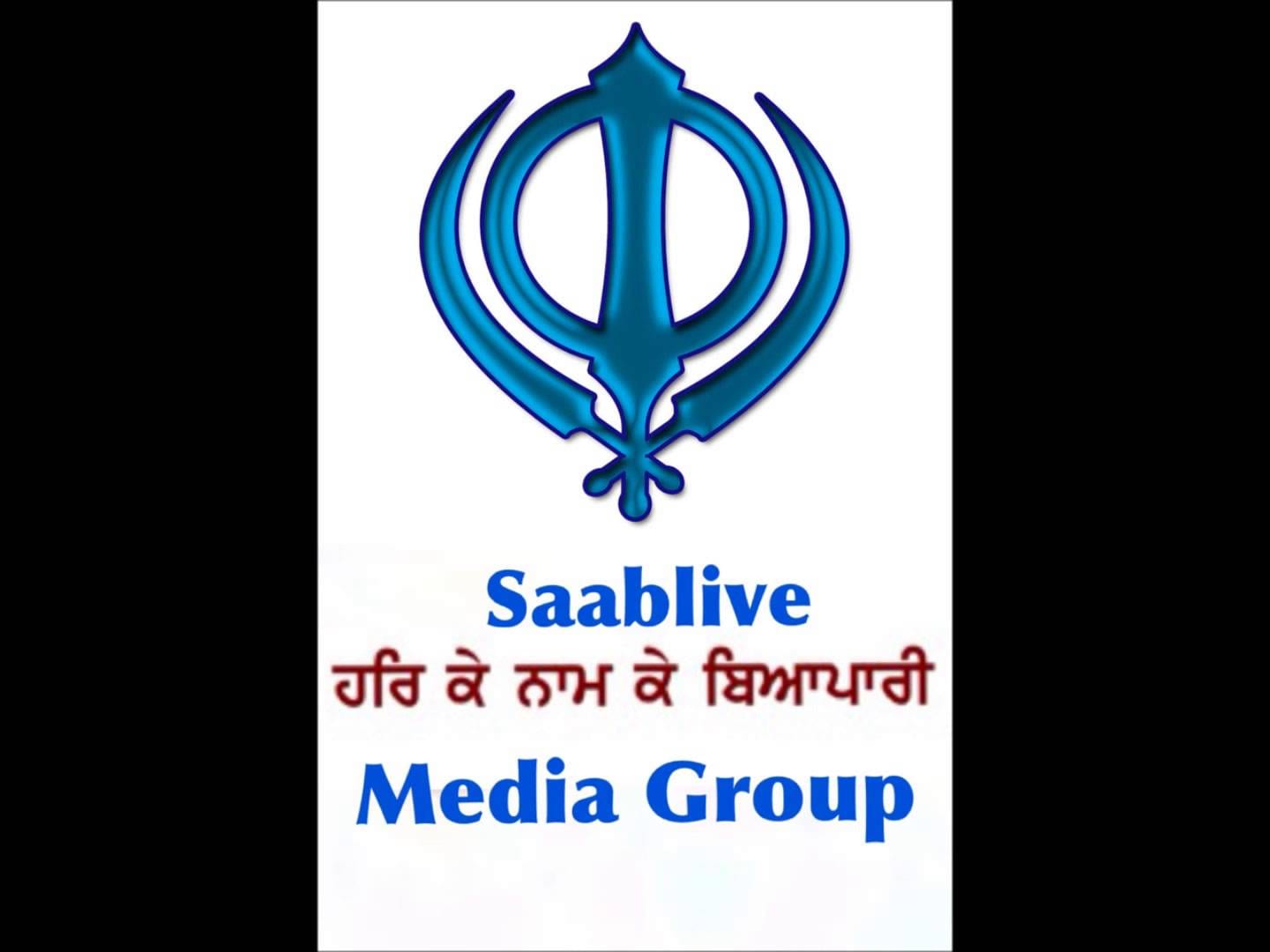
1. Doesn’t believe in Naam Simran
According to Gurbani the highest Karam is that of remembering Akaal Purakh, through Naam Simran which will allow us to merge with Akaal Purakh and get Darshan, the ultimate goal of Gurmat. However Dhunda does not believe in the concept of Naam Simran, him and his friends have called it useless recitation of a word. When asked recently what his thoughts are on Naam Simran are, he said that doing simran can give us a peace of mind in this world, but it cannot do anything else for us.
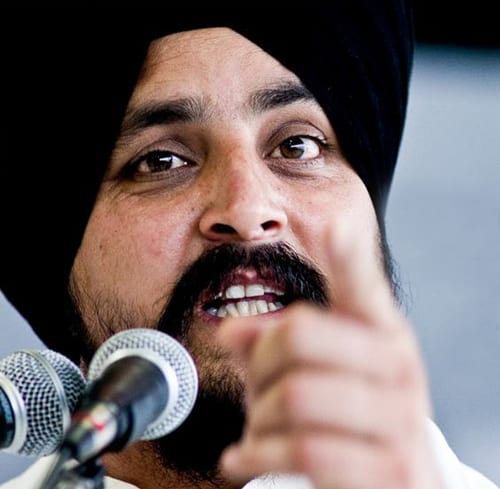
2. Doesn’t know who wrote Jaap Sahib
In a video Dhunda can be seen hitting a pothi of Jaap Sahib with a stick and questioning whether Guru Gobind Singh Jee wrote the Bani. He also states in another video that the Panth had not decided whether Jaap Sahib is Bani of Guru Gobind Singh or not.
Click here to view the embedded video.
Click here to view the embedded video.
3. Has questionable friends.
He is friends with the likes of Professor Darshan, Gurkhash Kala Afghana, Inderjit Ghagga, Gurcharan Jeonwala and others who are known to not believe in taking Amrit, in doing Naam Simran and do not consider Jaap Sahib, Chaupai Sahib etc. to be written by Guru Gobind Singh Jee.
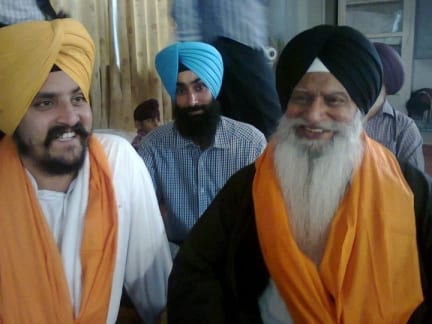
4. Does not believe Guru Sahib is all powerful.
Dhunda does not believe in miracles, he does not think anyone or anything can be brought back to life. On the other hand Gurbani says Sargur Mera Maar Jevale, meaning my Satguru can kill and bring back to life at his will.
Click here to view the embedded video.
5. Does not believe in an after life
When asked by Gursikhs whether or not he believes in a life after death, Dhunda’s response was that he does not yet know as he has not died.
6. Believes atheists are the same as Sikhs.
If he does not believe doing Simran can help us in the after life, and does not believe Guru Sahib is all-powerful how is he any different from atheists? To him Sikhs and atheists are the same, he says over and over we need to be good people and live a good life, without any mention of any sort of spirituality.
7. Does not have full faith in Guru Granth Sahib Jee
When someone questions what Gurbani says, they cannot have full faith in SGGS. Dhunda rejects Naam Simran, an after life and many other mystical and spiritual concepts mentioned in Gurbani. How can a person who does not believe Gurbani to be the Truth do Parchar on stages?
Five Facts About Prof. Davinder Pal Singh Bhullar
Prof. Davinder Pal Singh Bhullar was transferred to Punjab from the Tihar Jail on July 11, 2015. He has spent over 14 years in confined imprisonment. Various human rights activists and Government officials have supported his release on humanitarian grounds. Although Prof. Bhullar’s death sentence was commuted, following are some facts about the validity of his sentence –
- The senior judge, Justice MB Shah, who was the presiding judge of the 3 judge bench that sentenced Prof. Bhullar, voted for an acquittal. Prof. Bhullar was sentences despite the split decision. The public prosecutor AG Chaudhari, who was arguing against Bhullar, supported the verdict of Justice MB Shah.
- When arrested, Prof. Bhullar was given no legal counsel, which is a violation of international law (ICCPR).
- Confessions must be given before the court, however in the case of Prof. Bhullar, he was forced to confess before the police. This confession has been retracted by Bhullar. He alleges that he was tortured and made to sign blank papers. This claim was never investigated and no other evidence was presented.
- 133 eyewitnesses were called to identify Davinder Pal Singh Bhullar. None was able to identity him.
- The German government has acknowledged their mistake in deporting Bhullar.
Pictorial: From 1984 to 2015 – What Has Changed in India?
SikhFeed – Understanding the Situation in Punjab

1. Badal’s vote bank decreases significantly in Punjab. People are fed up after the lack of interest shown by the Punjab Government in cases of Guru Granth Sahib’s beadbi. One of the factors behind decreasing vote bank is that no interest has been shown by the Government towards Bapu Surat Singh Khalsa’s demands despite his 8 month long hunger strike.
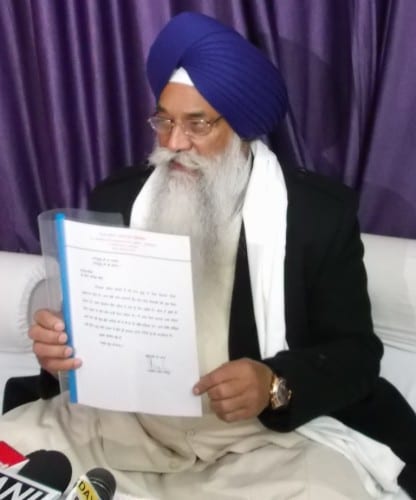
2. BJP’s distances with Shrimoni Akali Dal (Badal) are increasing day by day. Badal influences hukamnama in favour of Gurmeet Ram Rahim to get the votes of his followers. Meanwhile BJP attempts to secure Sikh votes as it announces release of Bhai Waryam Singh, a 70 year old Sikh political prisoners behind bars for last 25 years.
3. Sikhs all over the world object the decision issued by the appointed Jathedars. In the meantime, posters of Raam Rahim’s new movie go up in Punjab. Giani Mal Singh of Anandpur Sahib – one of the appointed Jathedars who approved Ram Rahim’s pardon, is attacked but survives.

4. Sikhs announce Sarbat Khalsa, seek new Takht Jathedars to free Sikh institutions from Akali Dal. SGPC President opposes the call for Sarbat Khalsa while pro-Akalis appeal Sikhs to accept authority and hukamnama issued by Akal Takht Sahib.
5. In the meantime, a 4 month old case comes to the fore as Guru Granth Sahib Ji’s ripped angs are discovered by Sikhs in the streets of village Bargeri near Faridkot in Punjab. Despite numerous requests by local Sikhs, Government failed to take action and register a case. A letter circulates online that warns Sikhs to look out for similar cases of sacrilege.
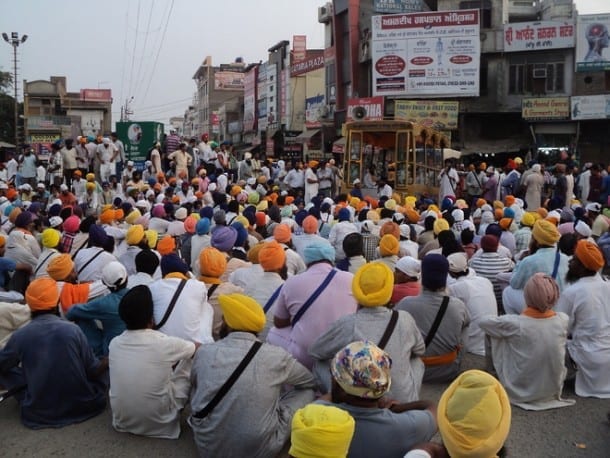
6. Protest takes place in Kotkapura and dozens of eminent Sikh leaders are arrested. Police uses force to disperse protesters. Protests then escalate throughout Punjab.
7. During one of the peaceful protests, police fires upon the protesters. Since protests escalated last week, 4 Sikhs have died.
8. Appointed Jathedars take back decision on Gurmeet Ram Rahim, however still fail to attend any protests. No arrests are made by the Government.
9. As protests intensify in Punjab, several politicians submit resignations. Rivals of the Akali Dal seek President’s rule in Punjab, that will break the State Government and put Punjab under the rule of the governor.
10. Subsequently, cases of sacrilege continue in Punjab in places like Ludhiana and Moga. So do protests.
SikhFeed: Which Type of Sikh Are You?
SikhFeed: Top 10 Blunders by the SGPC President in 2015 (supported by Akali Dal and appointed Jathedars)

1) Appointed Chief Secretary despite opposition by the Sikh Sangat
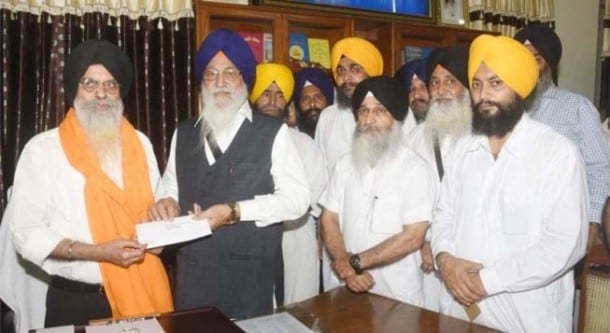
Harcharan Singh, a former banker with close ties with Rashtriya Sikh Sangat was appointed to manage day to day task of all SGPC secretaries. The post of chief secretary was invented just to accommodate Harcharan Singh. His monthly salary was set at Rs. 3 lakh, considereably higher than what is paid to other senior and executive SGPC members. On average, an SGPC employee makes Rs. 5,000 per month.
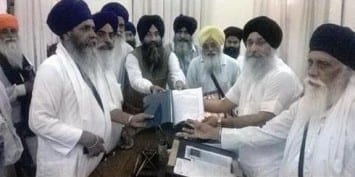 2) Failed to take up Bargadi beadbi case in which a saroop of Guru Granth Sahib Ji was stolen
2) Failed to take up Bargadi beadbi case in which a saroop of Guru Granth Sahib Ji was stolen
Despite numerous memorandums and appeals by Panthik leaders and Sikh sangat, SGPC showed no concern over the missing saroop of Guru Granth Sahib Ji. SGPC was first appealed to intervene in the matter in July 2015, however no action was taken. Four months after the saroop was stolen, local sangat recovered ‘angs’ of Guru Sahib scattered on the roads.
3) Suspended Akal Takht Sahib Punj Piare, Sri Harmandir Sahib Ragis and other SGPC employees
Following opposition and a strict stand by the Akal Takht Sahib Punj Piare to summon Giani Gurbachan Singh and other appointed Jathedars, SGPC President Avtar Makkar at once issued their suspension orders. In addition to expressing his authority to the Punj Piare, Makkar also single-handedly suspended a number of Ragi Jathas, including Bhai Harcharan Singh Khalsa.
 4) Changed dates of Guru Raamdas Ji’s Gurpurab
4) Changed dates of Guru Raamdas Ji’s Gurpurab
The SGPC will this year celebrated parkash purab of Sri Guru Ramdas Ji on October 29 instead of October 9. Sikh devotees were left in confusion over the date. The decision to amend the date was taken without taking Sikh organizations into confidence. There are already confusions in the Panth over the dates of Gurpurabs of other Guru Sahibs.
5) Expressed No Solidarity with Bapu Surat Singh Khalsa or Sikh Political Prisoners
After Bhai Gurbaksh Singh, Bapu Surat Singh took charge to seek release of Sikh political prisoners. Even though the SGPC had earlier promised to take up the case of Sikh political prisoners, it failed to seek release of any prisoner. SGPC further remained distanced from the struggle of Bapu Surat Singh Khalsa, at time, even condemning it.
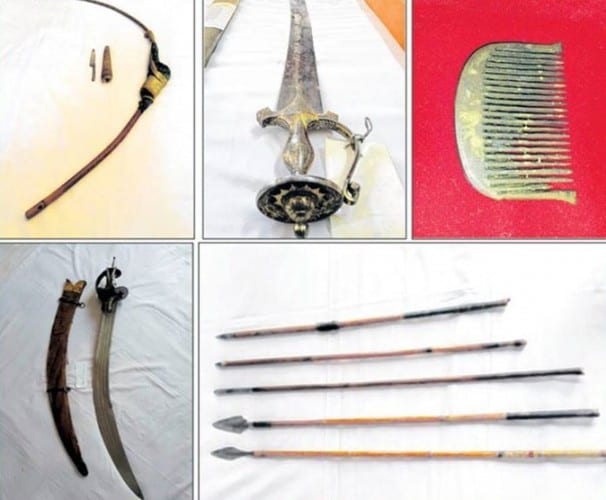
To divert the attention of the Sikh Sangat from the Bapu Surat Singh Khalsa, SGPC inaugurated Punjab wide “dharmik darshan yatra” in which Guru Sahib’s historical artifacts were displayed in a bus. SGPC came under huge criticism for faking several historical artifacts, including weapons and a kanga of Guru Gobind Singh Ji that were never in the SGPC’s procession. It had simply used fake artifacts and labeled them as originals.
7) Refused to Allow Sarbat Khalsa
SGPC President has refused to entertain the demand of Sikh organizations to call Sarbat Khalsa. As per Avtar Makkar, only the Akal Takht Sahib Jathedar can call Sarbat Khalsa. Sikh Sangat has resolved to meet on November 10 at Sri Akal Takht Sahib to decide upon important Panthik issues. While Sarbat Khalsa have typically taken place at Sri Akal Takht Sahib, historically, Sikhs have also joined together in jungles to deliberate upon imminent threats to the Panth, similar to one that exists today.
8) Forced the Removal of Pingalwara Stall from Sri Harmandir Sahib
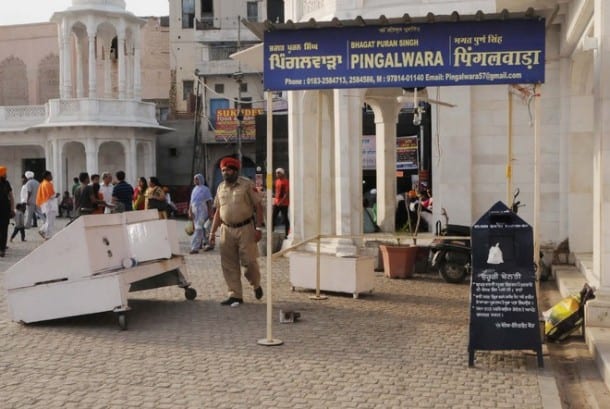
In August 2015, The SGPC and the All India Pingalwara Charitable Society came face-to-face. SGPC had received orders from Punjab Government that Pingalwara Stall was causing huge “nuisance” outside Sri Darbar Sahib. The stall was installed outside Sri Darbar Sahib 60 years ago to raise awareness of climate change and other environmental issues, and to fund raise for the Pingalwara organization. After growing protests, SGPC finally allowed the stall to be installed again, however at a different location.
9) Dismissed Giani Balwant Singh Nandgarh
Following Giani Balwant Singh’s allegations on the Akali Dal for working under the influence of the RSS, the SGPC took a strict notice and sacked the Takht Sri Damdama Sahib Jathedar without notice. SGPC came under huge criticism for managing the appointment and suspension at the behest of the Akali Dal.
10) Did not intervene in the Forced Ghar Vapsi of “Low-Castes”
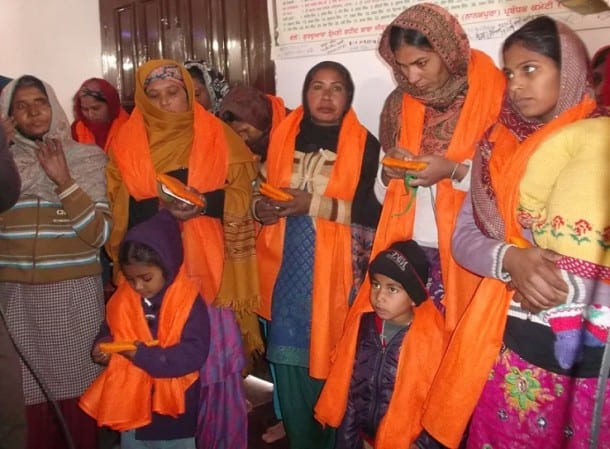
SGPC failed completely at stopping the forced conversion of the low-castes by the right-wing fanatic Hindu factions. These organizations are responsible for targeting vulnerable Sikhs living in poor conditions. While SGPC sabotaged growing parchar in Madhya Pardesh by American Sikhs, it did nothing to stop the “Ghar Vapsi” of the people in Punjab.
SikhFeed: Five Pictures That Tell The Story of 1984 Sikh Genocide in New Delhi
Elderly Sikh Who Slapped Akali Minister in Critical Condition
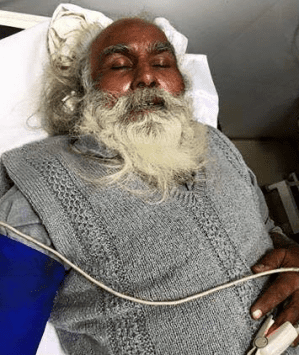
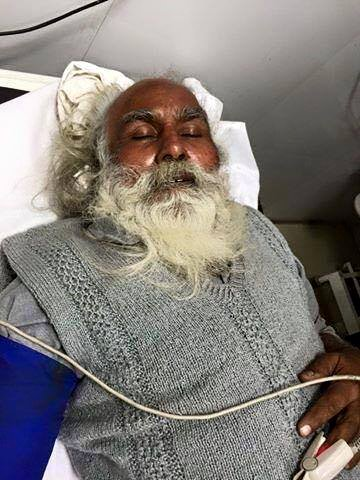 BATHINDA, Punjab—Just four days after Sukhbir Badal warned the people in Punjab to stay away from Akalis, an elderly Sikh slapped Minister Sikandar Maluka in Hamirpur, Bathinda. S. Jarnail Singh, 65, who slapped Maluka is in a serious condition. He was admitted to the Guru Gobind Singh Medical Hospital in Faridkot after supporters of Maluka thrashed him severely.
BATHINDA, Punjab—Just four days after Sukhbir Badal warned the people in Punjab to stay away from Akalis, an elderly Sikh slapped Minister Sikandar Maluka in Hamirpur, Bathinda. S. Jarnail Singh, 65, who slapped Maluka is in a serious condition. He was admitted to the Guru Gobind Singh Medical Hospital in Faridkot after supporters of Maluka thrashed him severely.
S. Jarnail Singh was beaten so severely by Maluka’s supporters and members of the Youth Akali Dal that he became unconscious. Police took him to the local Civil Hospital in Bhagta Bhaike, however doctors referred him to Guru Gobind Singh Medical Hospital in Faridkot.
The incident of slapping Maluka took place when he was addressing his supporters ahead of the November 23 rally called by the Akali Dal. During Maluka’s speech, S. Jarnail Singh was sitting in the front row before he planned Maluka.
Growing Wrath of Punjabis a Concern for Akalis
Akalis are preparing for a major rally on November 23 to show their strength and undermine the gathering of Sarbat Khalsa. However, the situation in Punjab remains tense after continuous cases of Guru Granth Sahib’s sacrilege. In a separate case yesterday, locals vandalized the place where the November 23 rally is scheduled to take place. The tent was removed overnight by unidentified persons.
SikhFeed: Attempt to Denounce Bapu Surat Singh’s 11 Month Long Struggle in 11 Minutes [Watch Video]

Here are five things you need to know about the recent video which has surfaced online about Bapu Surat Singh Khalsa –
1. If Bapu ji is in fact eating food, then what’s the need for the Government to forcefully arrest and detain him in hospital? If he’s eating, he should be totally fine and be be able to move.
2. Anyone who has gone to visit Bapu ji at the hospital has had to put their phones in a locker. How was anyone able to make such a long video without getting into trouble? This is obviously a trap!
3. Government knows Bapu Ji is nearing his last days. If Bhaji is martyred, Government will not be able to control the protests by the Sikhs. This video can be seen as damage control attempt by the Government. They want Sikhs to lose interest in the hunger strike so no one cares when Bapu ji dies.
4. Bapu Ji’s body shows signs of extreme food deprivation. We don’t really even need a video to expose him. His body shows it all.
5. Bapu Ji was given food under influence of medications and drugs. If anyone similar proof from his home, please share it online with rest of the sangat.
SikhFeed: 7 Protests Against Gandhi Statues

1. San Francisco, California (2010)
A local on-scene reporter stated: “This is Thalia Gigerenzer from the Bay Citizen, and I’m here at the Gandhi protest on Gandhi’s birthday at the Ferry Building.”
Protestor Bhajan Singh said: “We are the victims of the generations as the result of his policies which led to one million people killed in 1947.”
Protestor Pieter Friedrich said: “Gandhi was extremely racist towards black people in South Africa.”
2. Flint, Michigan (2010)
An ABC12 Flint anchor reported: “Not everybody’s in favor of what Gandhi stood for.”
“Community peace organizers,” stated an on-scene reporter, “marched to Wilson Park to unveil this statue as a symbol of universal peace. Though protestors across the street against the statue stood by to express why they believe Gandhi was not as saintly as many claim.
Protestor Raj Kamble said: “Over 250 million people, even today, suffer because of Gandhi’s policies. He was against the humanity. Against equality.”
3. Cerritos, California (2013)
Speaking at a Cerritos City Council meeting, Protestor B.J. Singh said: “Good evening, Mayor and Councilmembers, and thank you for the opportunity to come and speak here with you. I’d like to you about the Gandhi statue on the corner of Bloomfield and Alondra. A book was published — it was called ‘Freedom at Midnight’. The book put out about Gandhi, about his own personal morality, about his pedophilic or sexual predatory character. If a person of that character was in the U.S. and he did the things that he did, he would be in prison. I don’t think a statue of Gandhi sends a good message about our city.
Protestor Bhajan Singh said: “The reputation of Cerritos as Little India spreads throughout America. I’m going to leave you all the facts right here. You promoted a piece of racial hatred, you are promoting sexual exploitations, you are promoting violence, you are promoting a friend of Hitler, and this is totally un-American. This does not fit. Not only in Cerritos — it doesn’t fit anywhere.”
Protestor Pieter Friedrich said: “Gandhi was an advocate of racial segregation in pre-apartheid South Africa. Gandhi was also a man who, late into his 70’s, forced his 18-year-old grandniece Manu and his 17-year-old grandniece Abha to sleep naked with him on a nightly basis to ‘test’ his commitment to celibacy. A little discernment may have been helpful in considering which South Asian should be honored with a statue in Cerritos.”
4. Fresno, California (2013)
Protestor Jada Bernard said: “In the middle of this peace garden, we see a statue to Gandhi. And on Gandhi’s, it says: ‘My life is my message’. This is not from his Nobel Peace Prize acceptance speech because he was rejected five times for it. He participated in every major war of his lifetime. He was divisive, racist, and classist — oppressive even toward his own people. The statue says his life is his message, and that is the sad part, because his life is something that has not been told correctly.”
5. Johannesburg, South Africa (2015)
A NewsX anchor reported: “They were bearing placards reading: ‘Racist Gandhi must fall.’ As you can see, the father of the nation, his statue has been desecrated in South Africa. Mahatma Gandhi, of course, spent a lot of his early years as a lawyer in Johannesburg. A PTI correspondent from South Africa is joining me on the phone-lines.”
PTI Correspondent Faqir Hasan stated: “There’s also been a movement trying to prove that Gandhi was racist. You know, in his early writings he spoke using derogatory terms for black people.”
6. Davis, California (2016)
A CBS13 Sacramento anchor reported: “A proposed statue of Mahatma Gandhi is now causing controversy in the city of Davis.”
Protestor Dr. Gurbaksh Singh Bagha said: “I 100% oppose it.”
Davis Vice-Mayor Brett Lee said: “They seem to have really heartfelt, sincere concerns about the statue.”
“No statue,” said protestor Bhajan Singh. “We oppose the statue.”
CBS13 reported: “Opponents accuse Gandhi of having a dishonorable history of racism and abuse that is not well known, and they say he is not an appropriate role model.”
Speaking at a Davis City Council meeting, protestor Amar Singh Shergill stated: “But he was also a bigot, and he also was a predator on members of his own family — young women, and he also institutionalized caste. He helped create an institutionalized apartheid in South Africa.”
Another protestor said: “So I am very much against to locate the statue of the Gandhi in the Davis city.”
Yet another protestor said: “So I don’t like Gandhi’s statues.”
Dr. Bagha concluded: “So I duly oppose Gandhi’s statue in U.C. Davis.”
7. Accra, Ghana (2016)
An anchor for Pulse TV reported: “Academics at the University of Ghana are demanding a statue of Gandhi be pulled down. The statue glorified a man who was uncharitable in his attitude toward the black race, and allowing it to remain makes the university appear to hold double standards.”
An anchor for Joy News interviewed Dr. Kwadwo Appiagyei, who said: “But we think that there is a problem with the statue in the sense that Gandhi has a racist past. And in a situation or an environment where we champion the cause of equality — racial equality — I don’t think that this statue has a place here. But the racist past is what we think should be exposed for the world to know, because there seems to be a gloss over that aspect of his life. As long as it affects blacks, especially when he lived in South Africa.”
Gathering in support of the movement in Ghana, Indian-Americans recorded a video message to the University of Ghana, with their spokesman stating: “My name is Dr. Gurbaksh Singh Bagha. I am Sacramento, California. And this message is to convey to Ghana University officials that they have installed Gandhi’s statue in Ghana, and it is very shocking that Gandhi was racist, he was pedophilic, he dehumanized Africans and treated them less than animals. And still they put the statue in the university. We request you to remove the statue to give remove the statue to give justice to the African people from Ghana University. Thank you very much. I hope you listen. Thank you very much. Appreciate.”
In conclusion, speaking to the Cerritos City Council in 2013, B.J. Singh explained: “The only thing that keeps you from taking any action is, I think, the lack of knowledge — extensive knowledge — of Gandhi.”
Top 10 Reasons to Visit Sri Darbar Sahib

1) Amritvela
The Amritvela at Darbar Sahib is beyond words. The Simran, Nitnem and Asa Dee Vaar Keertan done at Amritvela are majestic.
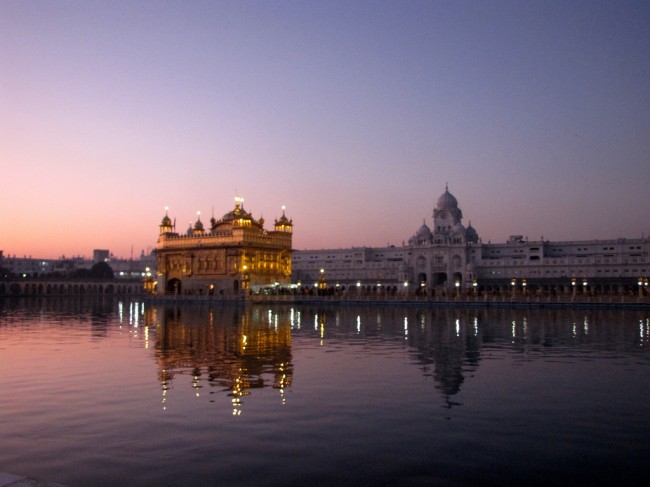
photo by jasleen kaur
2) It really is Heaven on Earth.
It is probably one of the most peaceful places on the planet. One feels calm and relaxed while in the vicinity of Darbar Sahib.
 photo by jasleen kaur
photo by jasleen kaur
3) The Procession of Sri Guru Granth Sahib Jee from Sri Akal Takht to Darbar Sahib at Amritvela is something everyone needs to witness.
Thousands of Sikhs gather as Guru Sahib is brought from Sukh Asan Asthaan in Sri Akaal Takht to Darbar Sahib. There is a Narsingh being blown and a Nagara being beaten—definitely a must see.
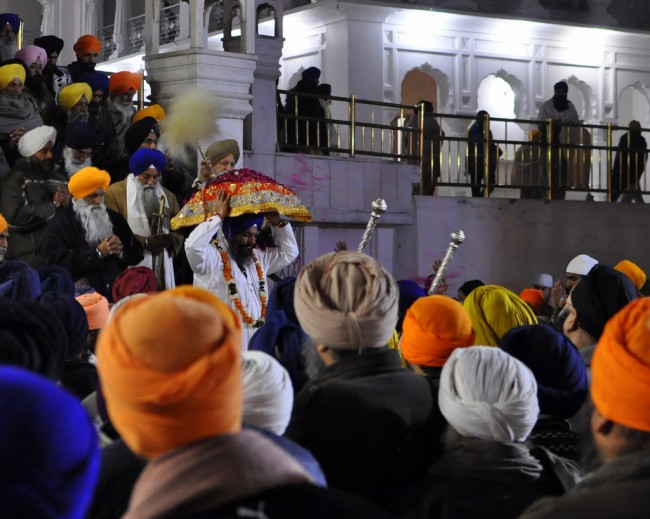 photo by jasleen kaur
photo by jasleen kaur
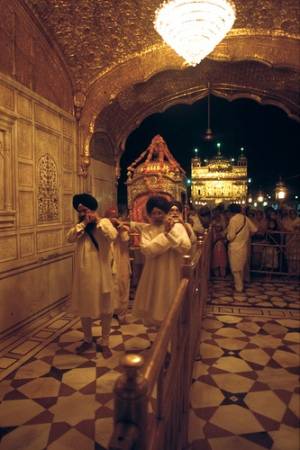
4) So much History. Darbar Sahib is one of the most historical Gurdwaras in the Panth.
Its not called “the holiest shrine of the Sikhs” for no reason. From the modern history of the 1984 attack to the times of the Gurus, Darbar Sahib has a long history in the Panth.
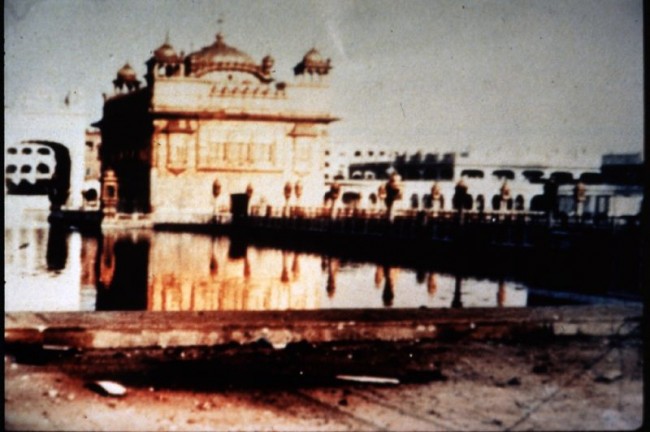
5) Shastar Darshan at Akaal Takht Sahib.
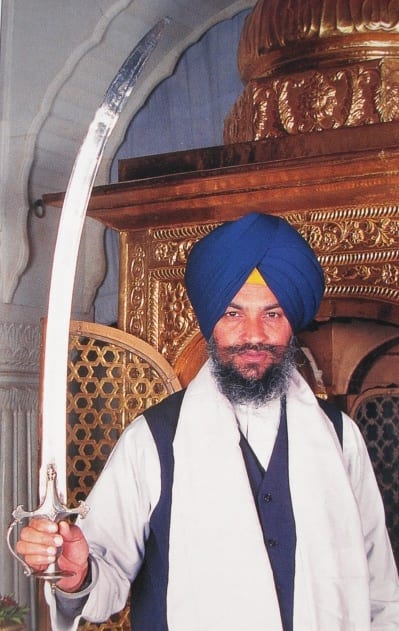
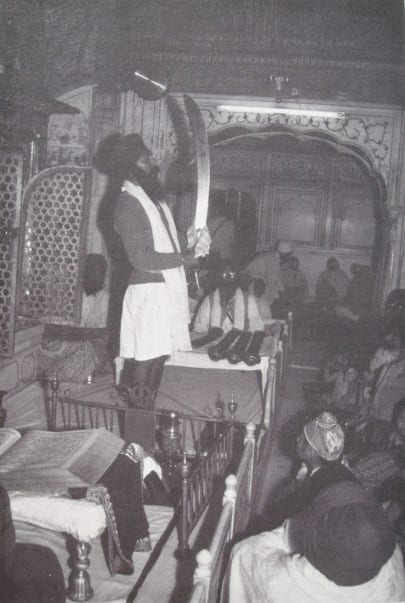
6) Visiting the spot where Baba Deep Singh placed his Sees and gave Shaheedi.
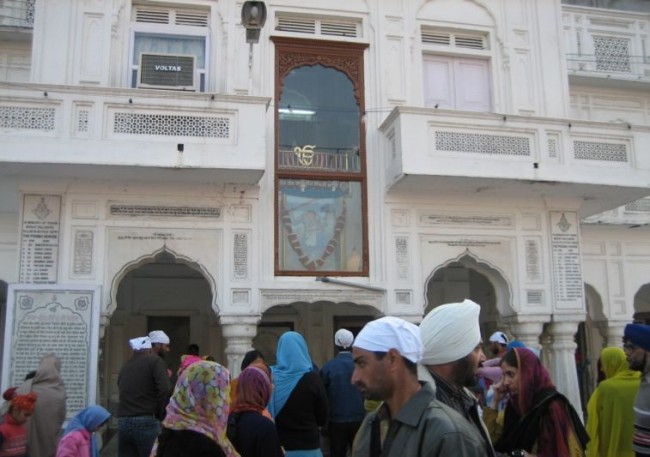
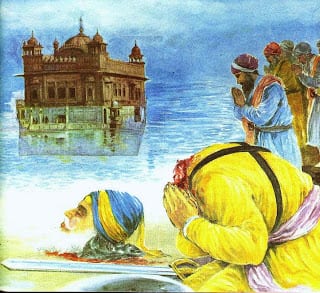
7) The fact that so many Sikhs from the past three centuries have walked on this very land.

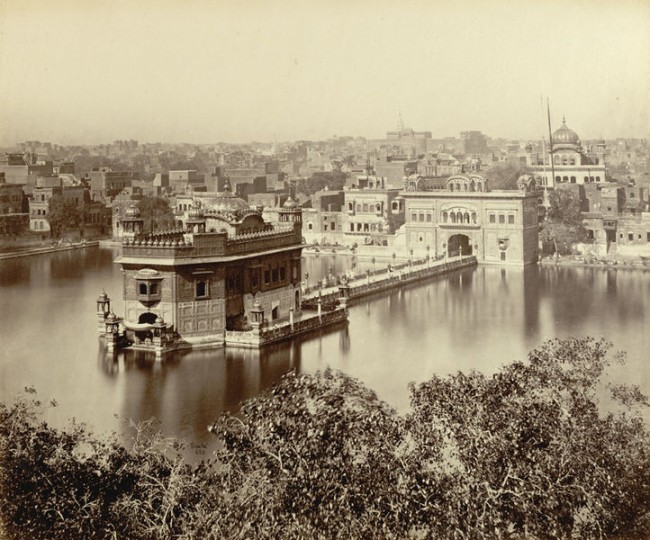
8) How much Seva is done at Darbar Sahib.
It’s amazing how much Seva is done at Darbar Sahib. When you get your shoes back after leaving Darbar Sahib, they’ve been cleaned. The number of Sevedaars in the Langar Halls making food and cleaning dishes. The number of Sevadaars keeping the Parkarma clean. It’s all amazing.
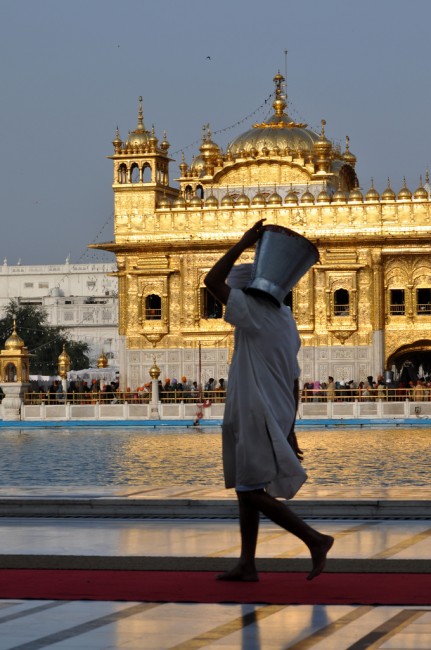 photo by jasleen kaur
photo by jasleen kaur
9) Doing Ishnaan.
Fulfilling our daily Ardaas of “Sri Amritsar Sahib Jee dai Darshan Ishnaan”
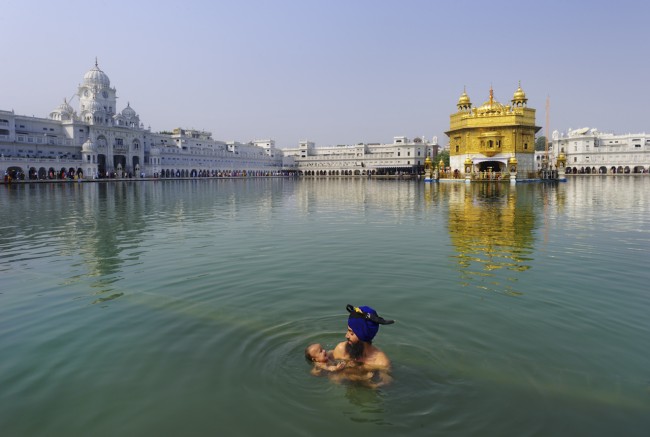
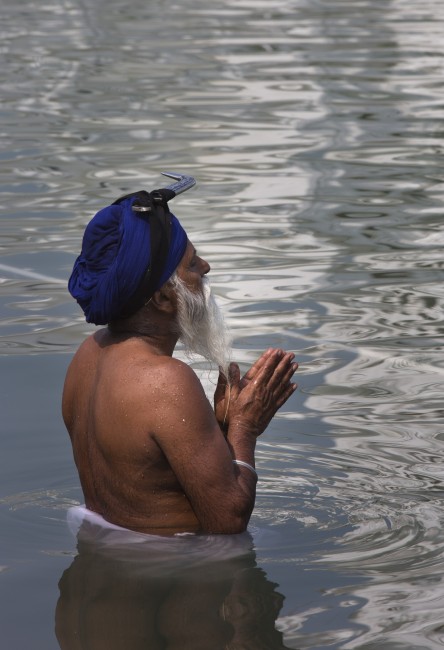
10) Walking the Parkarma and taking in everything.
From the Keertan, to Baba Budha Jee’s Asthaan, to the cold water given out on hot days in memory of Baba Deep Singh, to seeing hundreds and thousands of other Sikhs and Non-Sikhs doing the same.
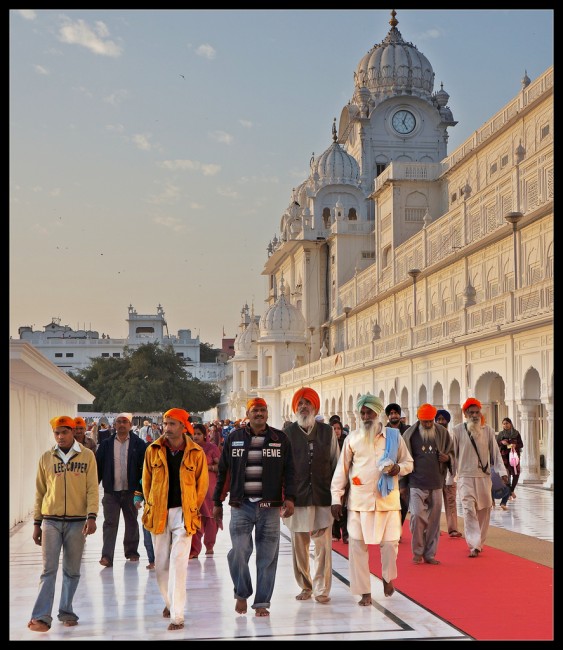
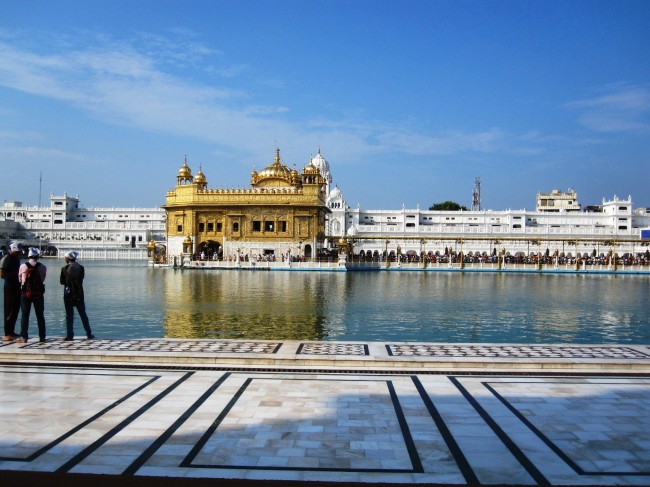






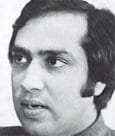


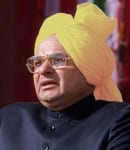
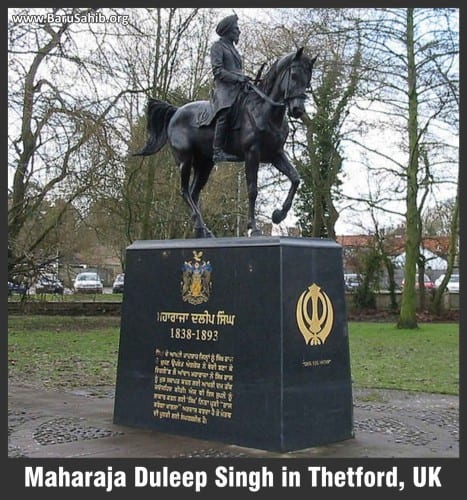
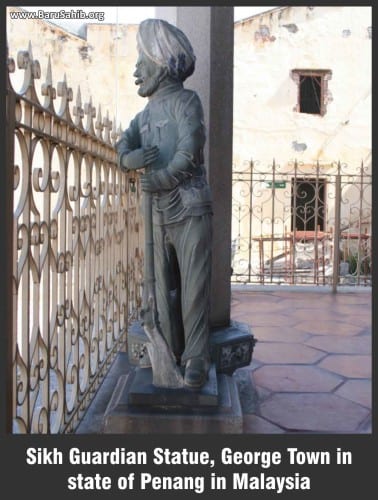
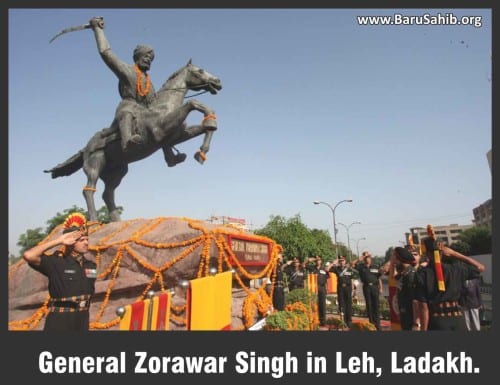
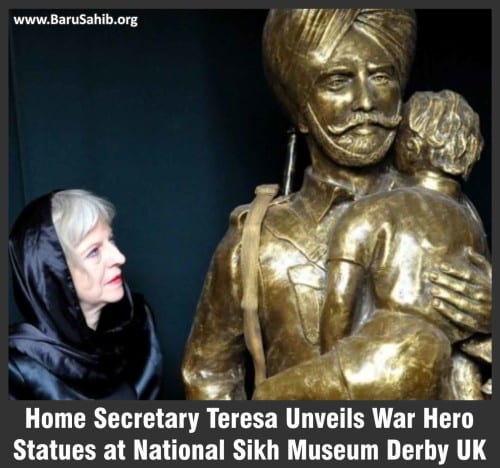
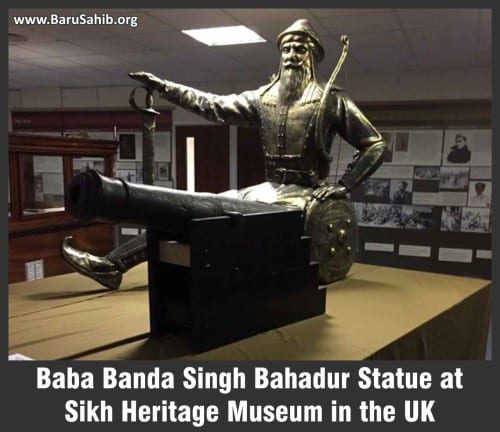
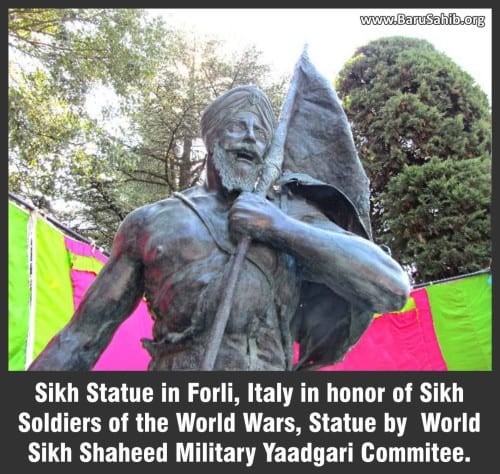
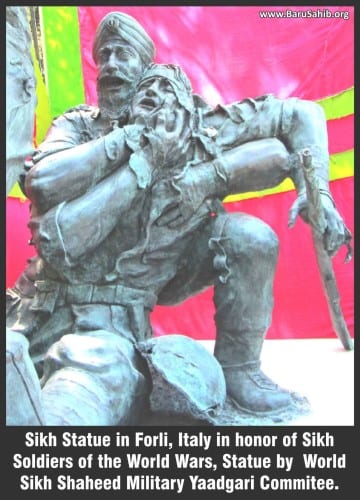


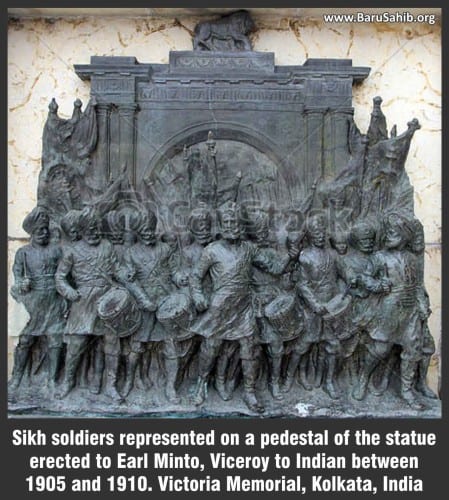
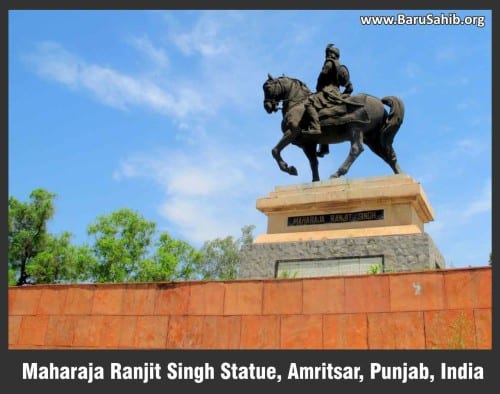
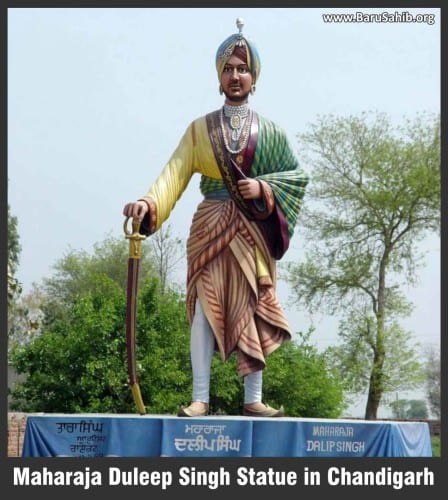
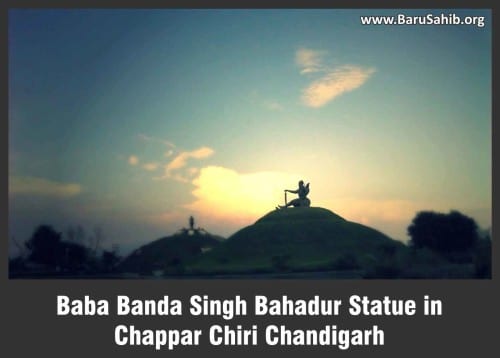
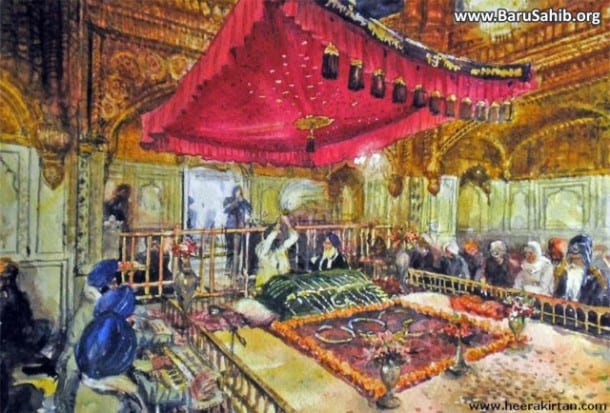
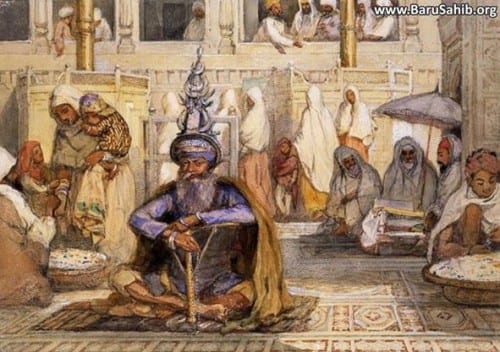
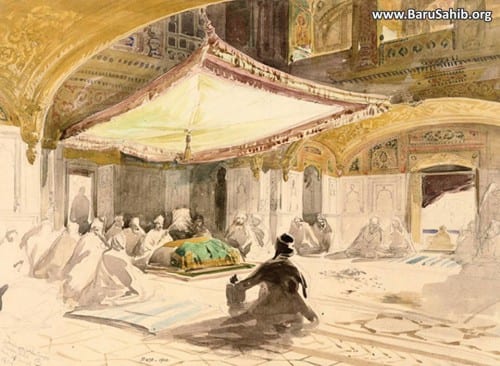
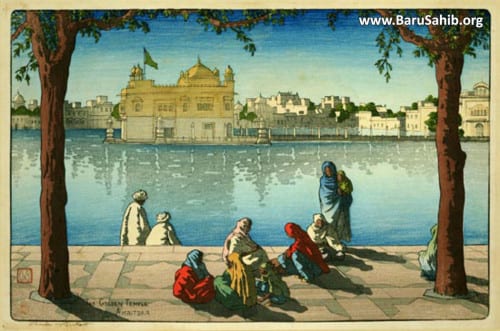
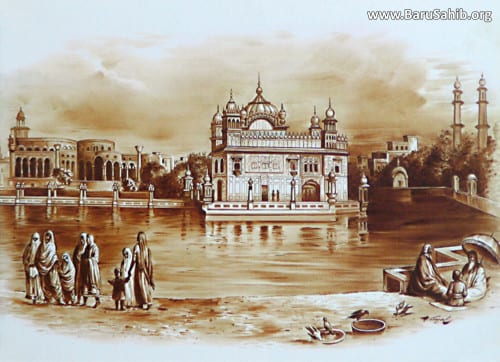
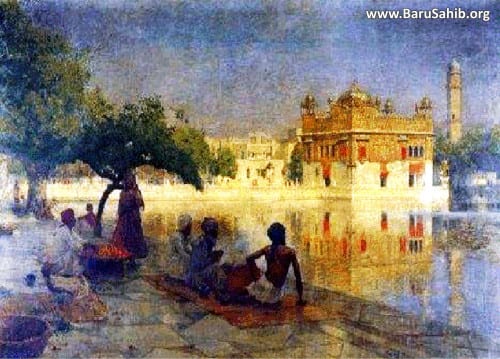

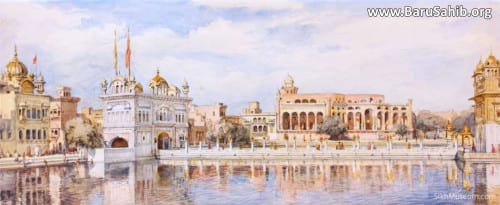
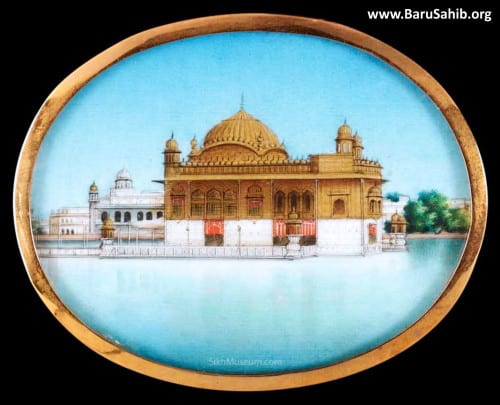

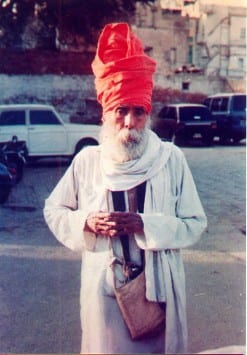


 100 and a bottle of liquor to each person involved in the killing.
100 and a bottle of liquor to each person involved in the killing.
